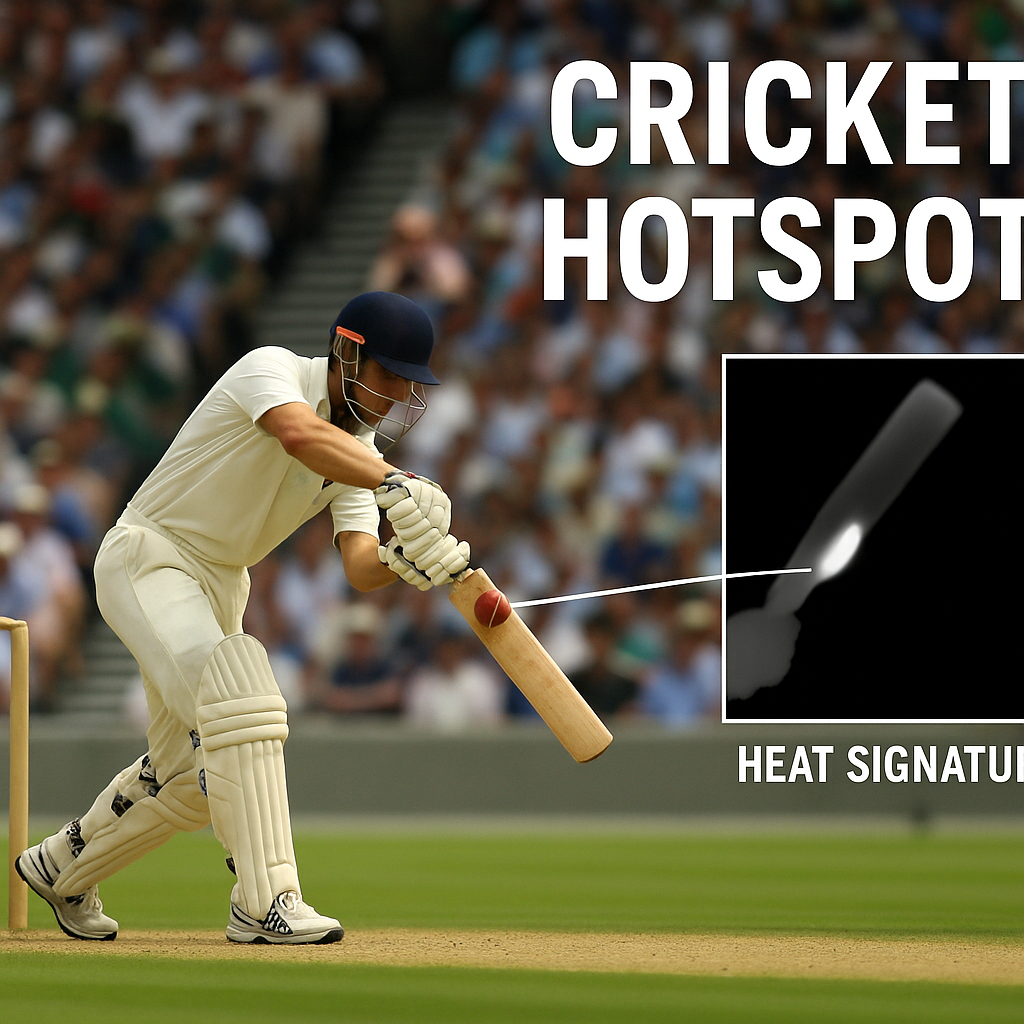In the world of cricket, where one slight edge can change the entire match, accuracy is everything. For decades, fans, umpires, and players have debated over tight calls — especially when it comes to catches behind the wicket or LBW (Leg Before Wicket) decisions. Enter Hotspot, a breakthrough technology that’s making the game smarter, fairer, and way more exciting.
Let’s dive deep into what Cricket Hotspot is, how it works, and why it’s become a trusted eye in modern cricket.
What Is Cricket Hotspot?
Hotspot is a thermal imaging technology used in cricket to detect whether the ball has made contact with the bat or the player’s body. It relies on the principle that when two objects collide, like a cricket ball and bat, a small amount of heat is generated due to friction. That heat is invisible to the human eye, but not to Hotspot.

Using special infrared cameras, Hotspot can identify the exact point of contact, displaying a white mark or “hot spot” where the ball struck. This has become incredibly helpful in Decision Review System (DRS) decisions, especially for confirming faint edges or fine touches that regular cameras and microphones might miss.
How Does Hotspot Work?
The process sounds like something out of a science lab, but it’s actually pretty simple:
Two or more infrared cameras are set up at different angles around the pitch.
These cameras constantly record the heat signatures from every movement on the field.
When the ball makes contact with the bat, pad, glove, or any surface, it generates a small increase in temperature at the point of impact.
The thermal cameras capture this change in temperature and produce an image showing a white mark (hotspot) where the contact happened.
Third umpires use this image to confirm whether there was contact, helping make more accurate decisions.
This system is often combined with other technologies like UltraEdge or Snickometer to make the DRS as reliable as possible.
When Is Hotspot Used?
Hotspot plays a key role in many match situations, especially:
Caught Behind Appeals: When a batter is suspected to have edged the ball to the wicketkeeper or slip fielders, Hotspot helps confirm whether the ball really hit the bat.
LBW (Leg Before Wicket) Reviews: It can reveal if the ball hit the bat or pad first, which is important in deciding LBW outcomes.
Close-In Catches: Sometimes, it’s hard to tell if the ball touched the glove or just brushed the air — Hotspot gives a visual answer.
In any situation where there’s doubt about contact, Hotspot becomes the go-to tool.
Why Is Hotspot Important?
Hotspot has improved the fairness and precision of cricket matches in several ways:
It helps umpires make better decisions under pressure.
It reduces arguments and complaints about controversial dismissals.
It adds transparency to the game — players and fans can actually see what happened.
It builds trust in the Decision Review System, especially in high-stakes matches like World Cups and Test series.
Hotspot adds a scientific layer to cricket, turning blurry guesses into clear visuals.
Limitations of Hotspot
As good as it is, Hotspot isn’t perfect. Here are a few challenges:
If the ball brushes the bat very lightly, the heat generated might not be strong enough for the cameras to pick up.
If the bat is taped or wet, it might block the heat signature.
The system is expensive to install and maintain, so it’s mostly used in high-profile international matches.
Weather conditions like heavy humidity can sometimes interfere with accurate readings.
That’s why Hotspot is often used alongside other tools to ensure decisions are as accurate as possible.
Final Thoughts
Cricket is a game of fine margins. One edge, one misjudged decision, or one wrong call can swing a match. That’s why technologies like Hotspot are so important. They help make the game more fair, more exciting, and more trusted by fans around the world.
So the next time you’re watching a match and see the third umpire checking for a hotspot, you’ll know exactly what’s going on. Behind that simple white mark is a powerful technology that’s changing the way cricket is played — one frame at a time.

Leave a Reply